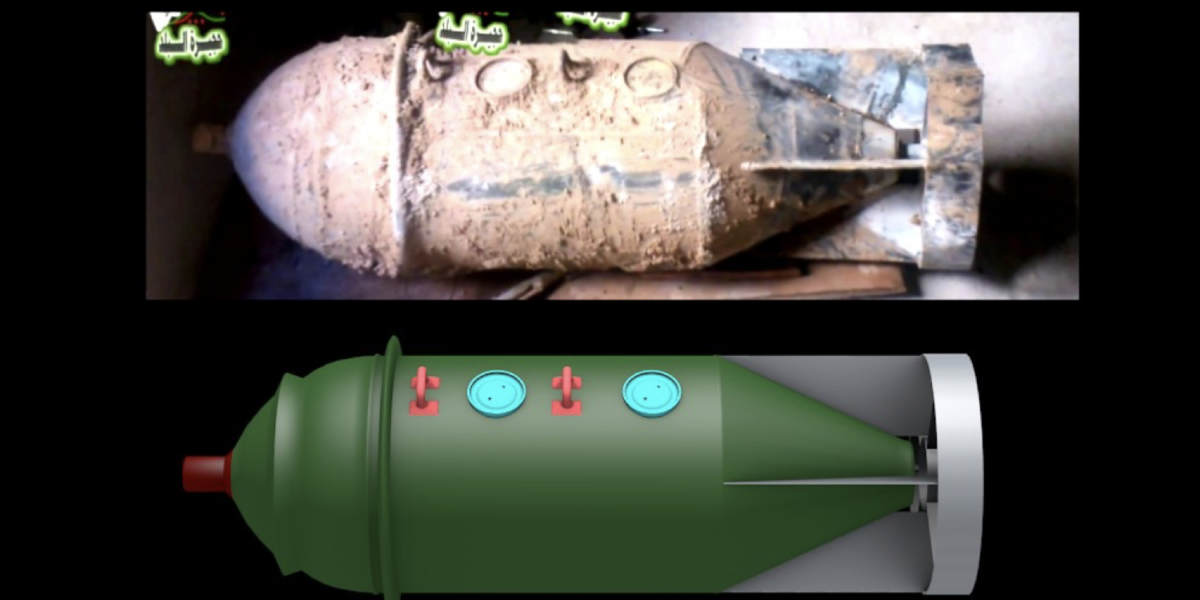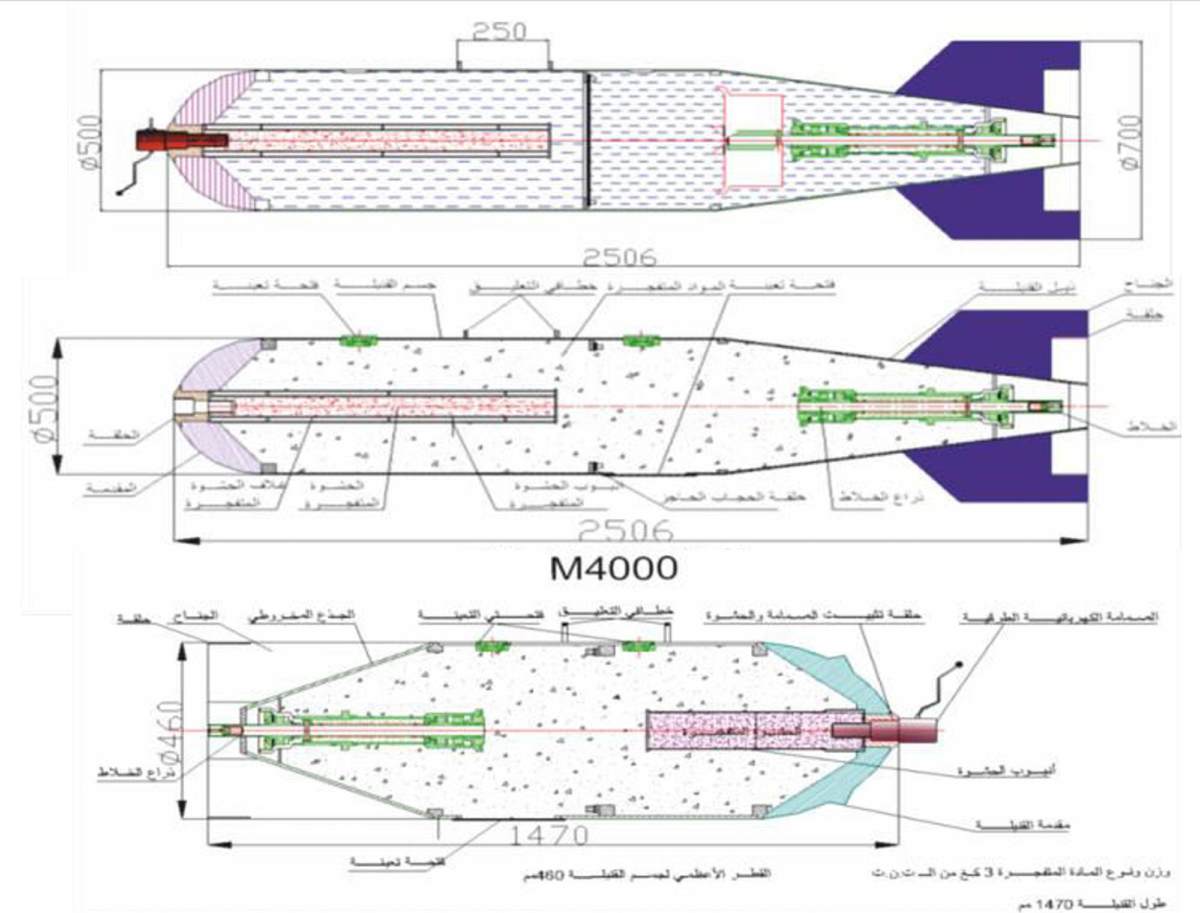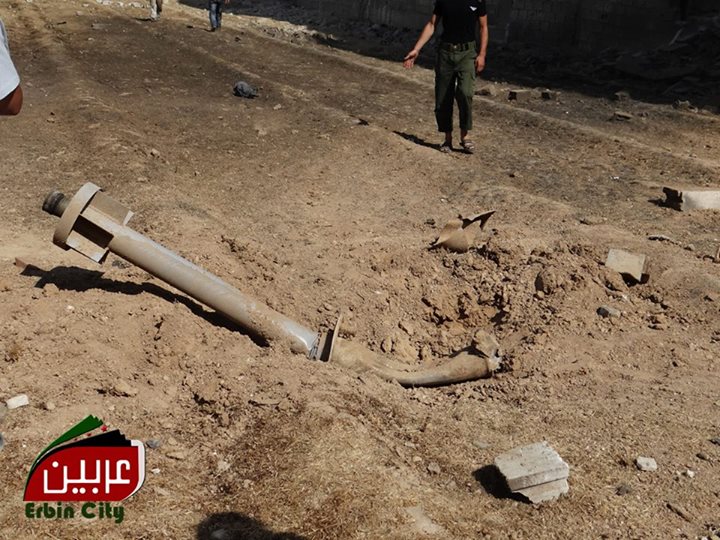Will Get Fooled Again - Seymour Hersh, Welt, and the Khan Sheikhoun Chemical Attack
On June 25th 2017 the German newspaper, Welt, published the latest piece by Seymour Hersh, countering the “mainstream” narrative around the April 4th 2017 Khan Sheikhoun chemical attack in Syria. The attack, where Sarin was allegedly used against the local population, dropped in a bomb by the Syrian Air Force, resulted in President Trump taking the decision to launch cruise missiles at a Syrian airbase.
As with his other recent articles, Hersh presented another version of events, claiming the established narrative was wrong. And, as with those other recent articles, Hersh based his case on a tiny number of anonymous sources, presented no other evidence to support his case, and ignored or dismissed evidence that countered the alternative narrative he was trying to build.
This isn’t the first chemical attack in Syria which Hersh has presented a counter-narrative for, based on a handful of anonymous sources. In his lengthy articles for the London Review of Books, “Whose sarin?” and “The Red Line and the Rat Line”, Hersh made the case that the August 21st 2013 Sarin attack in Damascus was in fact a false flag attack intended to draw the US into the conflict with Syria. This claim fell apart under real scrutiny, and relied heavily on ignoring much of the evidence around the attacks, an ignorance of the complexities of producing and transporting Sarin, and a lack of understanding about facts firmly established about the attacks.
With Hersh’s latest article, this pattern of behaviour is repeated. The vast majority of the article appears to be based on an anonymous source, described as “a senior adviser to the American intelligence community, who has served in senior positions in the Defense Department and Central Intelligence Agency”. As with his earlier articles, details of the attack as described by his source flies in the face of all other evidence presented by a range of other sources.
So what scenario does Hersh’s source describe, and how does this contradict other claims? Hersh claims that “Syrians had targeted a jihadist meeting site on April 4 using a Russian-supplied guided bomb equipped with conventional explosives”, and this attack resulted in the release of chemicals, including chlorine, but not Sarin, that produced the mass casualty event seen on April 4th. Hersh’s source is able to provide a great deal of information about the target, claiming intel on the location was shared with the Americans ahead of the attack.
Hersh’s source describes the building as a “two-story cinder-block building in the northern part of town”, with a basement containing “rockets, weapons and ammunition, as well as products that could be distributed for free to the community, among them medicines and chlorine-based decontaminants for cleansing the bodies of the dead before burial”. According to Hersh’s source, the floor above was “an established meeting place” and “a long-time facility that would have had security, weapons, communications, files and a map center.”
The source goes on to claim that Russia had been watching the location carefully, establishing its use as a Jihadi meeting place, and watching the location with a “drone for days”, confirming its use and the activity around the building. According to the source the target was then hit at 6:55am on April 4th, and a Bomb Damage Assessment by the US military determined that a Syrian 500lb bomb “triggered a series of secondary explosions that could have generated a huge toxic cloud that began to spread over the town, formed by the release of the fertilizers, disinfectants and other goods stored in the basement, its effect magnified by the dense morning air, which trapped the fumes close to the ground.”
At this point it’s worth taking a look at the claims the Syrian and Russian governments made in response to accusations that Syria had dropped Sarin on Khan Sheikhoun. Walid Muallem, Syria’s Foreign Minister, stated in a press conference two days after the attack that the first air raid was conducted at 11:30am local time, attacking “an arms depot belonging to al-Nusra Front chemical weapons”. It was noted by observers at the time the time of the claimed attack was hours after the first reports of casualties came in, and both contradicts the 6:55am stated by Hersh’s source, and the slightly earlier time provided by the Pentagon, approximately between 6:37am and 6:46am local time. Not only that, but the Syrian Foreign Minister also described the target as a chemical weapons arm depot, not a meeting place that stored other items in the basement.
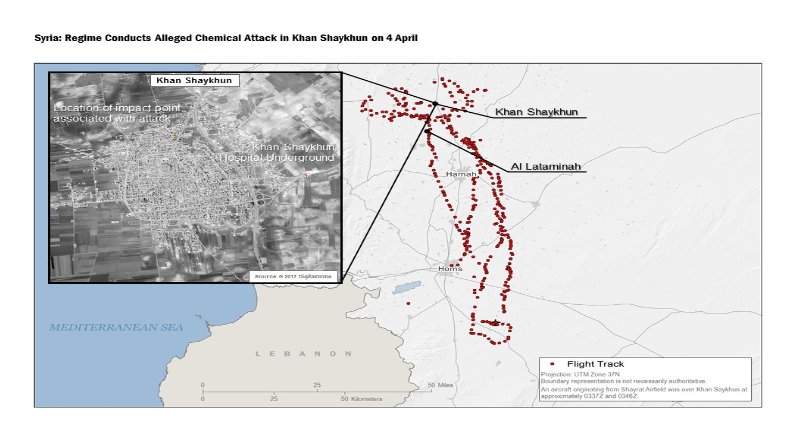
The Pentagon’s map of the flight path of the aircraft that attacked Khan Sheikhoun
Russia also published their own claims about the attack. Sputnik reported the following:
“According to Konashenkov, on Tuesday “from 11.30 to 12.30, local time, [8.30 to 9.30 GMT] Syrian aircraft conducted an airstrike in the eastern outskirts of Khan Shaykhun on a large warehouse of ammunition of terrorists and the mass of military equipment”.
Konashenkov said that from this warehouse, chemical weapons’ ammunition was delivered to Iraq by militants.
Konashenkov added that there were workshops for manufacturing bombs, stuffed with poisonous substances, on the territory of this warehouse. He noted that these munitions with toxic substances were also used by militants in Syria’s Aleppo.”
These claims are consistent with the claims of their Syrian ally, but not the claims made by Hersh and his source. In the face of allegations of chemical weapon use neither Russia nor Syria mention targeting “a jihadist meeting site”, and described the location as a “large warehouse” on the “eastern outskirts of Khan Shaykhun”, not a “two-story cinder-block building in the northern part of town” with “security, weapons, communications, files and a map center.” In fact, the only thing Hersh’s account and the Russian and Syria account agrees on is it was a Syrian aircraft which conducted the attack.
In addition to this, neither Syria nor Russia presented any evidence to support their claim. If, as Hersh claims, Russia had been observing the site with a “drone for days” then they would not only have the precise location of the site, but footage of the site. However, both Syria and Russia have failed to make any imagery of the site public, nor have they provided any specific details about the location of the site. If they had, it would be possible to easily check if the location had been bombed on Terraserver, which has satellite imagery of Khan Sheikhoun before and after the date of attack. In common with Russia and Syria, Hersh’s source seems unable to provide the exact location of the attack, despite his apparent in depth knowledge of the attack.
Ignoring the fact that the version of events presented by Hersh runs counter to narratives produced by all sides, the claims around the chemical exposure are also worth examining. Hersh refers to “a Bomb Damage Assessment (BDA) by the U.S. military” of the strike, which he provides no source for, which supposedly states “a series of secondary explosions that could have generated a huge toxic cloud that began to spread over the town, formed by the release of the fertilizers, disinfectants and other goods stored in the basement”. He describes the symptoms seen in victims as “consistent with the release of a mixture of chemicals, including chlorine and the organophosphates used in many fertilizers, which can cause neurotoxic effects similar to those of sarin.” Here it is worth pointing out that organophosphates are used as pesticides, not fertilizers, and it’s unclear if this error is from Hersh himself or his anonymous source. This is not the only factual error in the report, with Hersh stating an SU-24 was used in the attack, not an SU-22 as claimed by every other source, including the US government.
Despite Hersh’s apparent belief Sarin was not used in the attack, other sources disagree, not least the OPCW, tasked to investigate the attack. On April 19th 2017 the OPCW published a statement by Director-General, Ambassador Ahmet Üzümcü describing the results of the analysis of samples taken from victims of the attack, both living and dead, stating:
“The results of these analyses from four OPCW designated laboratories indicate exposure to Sarin or a Sarin-like substance. While further details of the laboratory analyses will follow, the analytical results already obtained are incontrovertible.”
A later report from the OPCW, dated May 19th, provided further analysis of samples from the site, including dead animals recovered from the site, and environmental samples. Signs of Sarin or Sarin-like substances were detected in many samples, as well as Sarin degradation products, and at least two samples which state Sarin itself was detected.
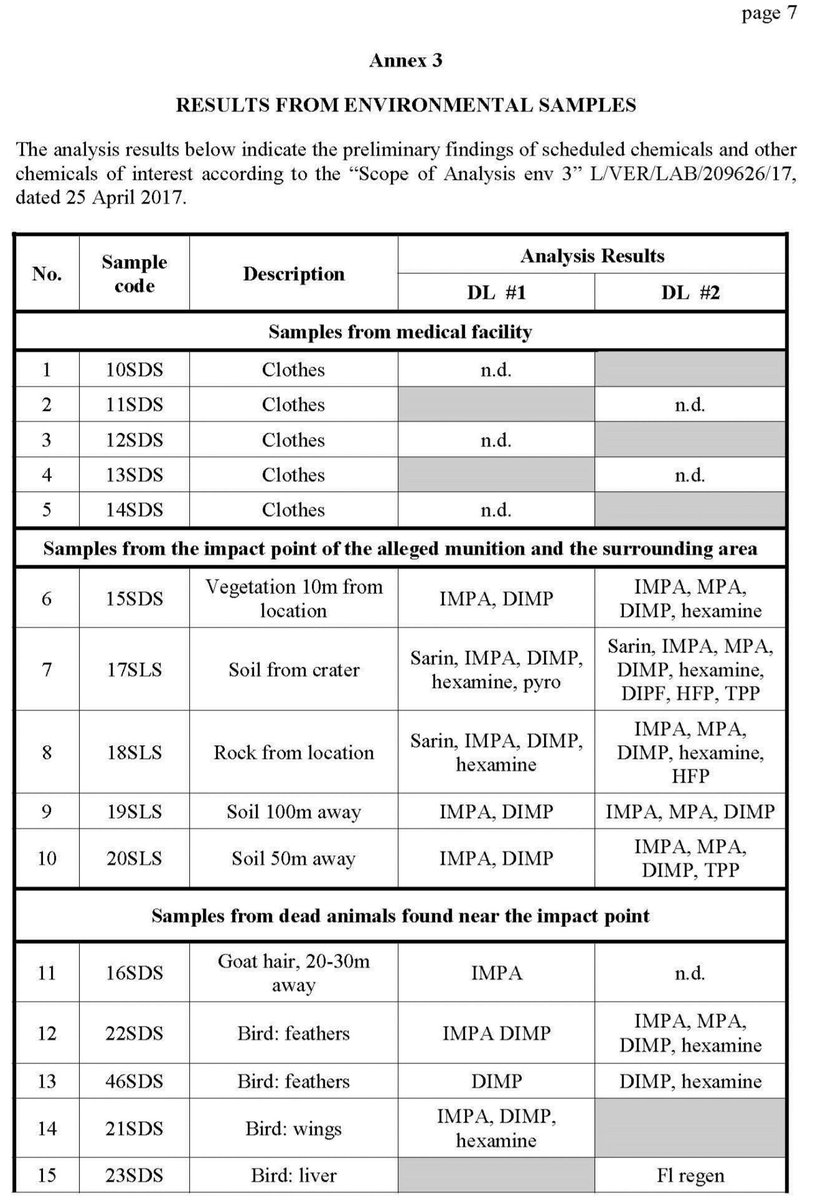
Annex 3 of the May 19th OPCW report
These results are also consistent with intelligence published by the French government, which describes the following:
“The analyses carried out by French experts on the environmental samples collected at one of the impact points of the chemical attack at Khan Sheikhoun on 4 April 2017 reveal the presence of sarin, of a specific secondary product (diisopropyl methylphosphonate – DIMP) formed during synthesis of sarin from isopropanol and DF (methylphosphonyl difluoride), and hexamine. Analysis of biomedical samples also shows that a victim of the Khan Sheikhoun attack, a sample of whose blood was taken in Syria on the very day of the attack, was exposed to sarin.”
Based on this and other reports, multiple sources state Sarin was used in the attack, despite Hersh’s narrative of an accidental chemical release. The fact Hersh does not refer to any of these reports seems to, at best, overlook key information about the nature of the attack, and at worst, purposely ignores information that contradicts the narrative he’s attempting to build.
Going back to the attack site, this ignoring or ignorance of contradictory information is also apparent. Open source material from the day of the attack, as well as satellite imagery analysis by various sources (including this excellent piece by the New York Times) consistently point to the same impact sites, one of which is the specific crater claimed to be the source of Sarin released on the day of the attack. None of these point to the structure described by Hersh, nor is there any evidence of a site as described by Hersh being attacked. Journalists visited the town soon after the attack, and made no mention of the site as described by Hersh.
One might argue that all the individuals and groups on the ground, all the doctors treating the victims, and every single person spoken to by the journalists visiting the site failed to mention the site described by Hersh, but there’s a very simple way to clear up this matter. Anyone can access satellite imagery of the town before and after the date of the attack thanks to the imagery available on Terraserver, all Hersh’s source has to do is provide the coordinates of the building attacked and anyone with an internet connection will be able to look at that exact location, and see the destroyed building. A simple way for both Hersh and Welt to preserve their reputations.
